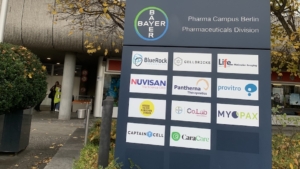
Supporting ulta-rare diseases
Medicines for rare and paediatric diseases have been successfully enabled through the EU’s incentives framework. The number of medicines in development has risen significantly since the introduction of the legislation (3,678 applications for orphan designation by end 2020).
It is estimated that 80% of rare disease patients suffer from just 4% of the known rare conditions.However many patients continue to lack treatment options with 96% of rare diseases continuing to go without treatments. Novel solutions are needed to address very rare diseases. These areas need transformative thinking and different sets of solutions Europe needs to step up again here and three angles lie within its reach to deliver.
Advance in basic science is required, as companies will not invest when understanding of the disease mechanism is limited. For diseases including haemophilia and cystic fibrosis, people continue to have a significant disease burden. The development of treatments for very rare conditions requires new economic models, favouring close private-public partnerships. Programmes such as IMI have shown to be beneficial to address issues where industry or universities alone cannot deliver.
A common European Health Data Space is also a major tool that could deliver patient benefit. For obvious reasons, ultra-rare diseases are incredibly scarce for data and this is a super-power that Europe should use, for both the patients and the competitive edge that it brings to innovation.
Developing medicines for the majority of very are diseases are not economically viable in the current conditions and here additional incentives are required. Priority regulatory review voucher, transferable market exclusivity voucher, dedicated EU-level funding mechanism to very rare conditions would allow a company to invest in products that do not have commercial viability on their own.
Supporting this further by working with national authorities to encourage the acceptance of “significant benefit” in pricing and reimbursement discussions (as in Germany) would also support investment decisions.
Ensuring sufficient resources to assist in market access and regulatory aspects are also necessary. A one-stop shop in the EMA would be a significant help to SMEs in particular, helping to de-risk and speed up the route to the evenue which, in turn, boosts earlier stage investment. The COVID-19 pandemic has shown what Europe can do from a regulatory perspective, in particular, the potential from aligning EMA and FDA, and convergence is the holy grail for rare and paediatric diseases where global activity is vital.
Claire Skentelbery, PhD, joined EuropaBio as Director General, in November 2020. The co-founder of the Council of European BioRegions has be previously leading the European Biotechnology Network and the Nanotechnology Industries Association as Director General.
This article was originally published in Autumn Edition European Biotechnology Magazine 2021.


 adobe.stock.photos - Yurii Kibalnik
adobe.stock.photos - Yurii Kibalnik  Biocom interrelations GmbH
Biocom interrelations GmbH MitoRx Therapeutics Ltd
MitoRx Therapeutics Ltd